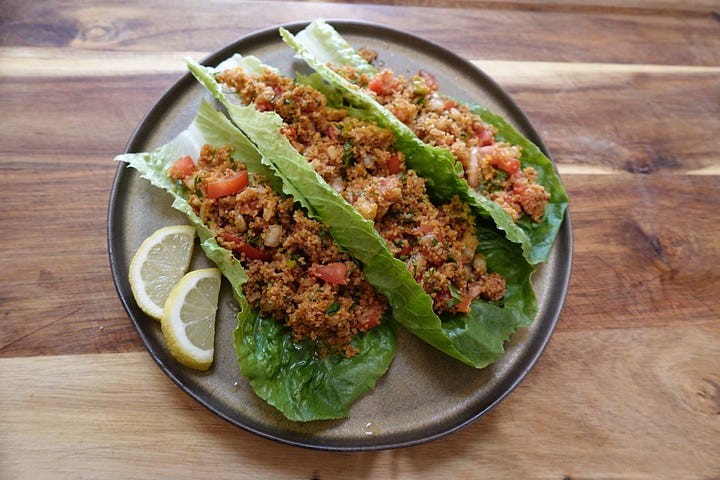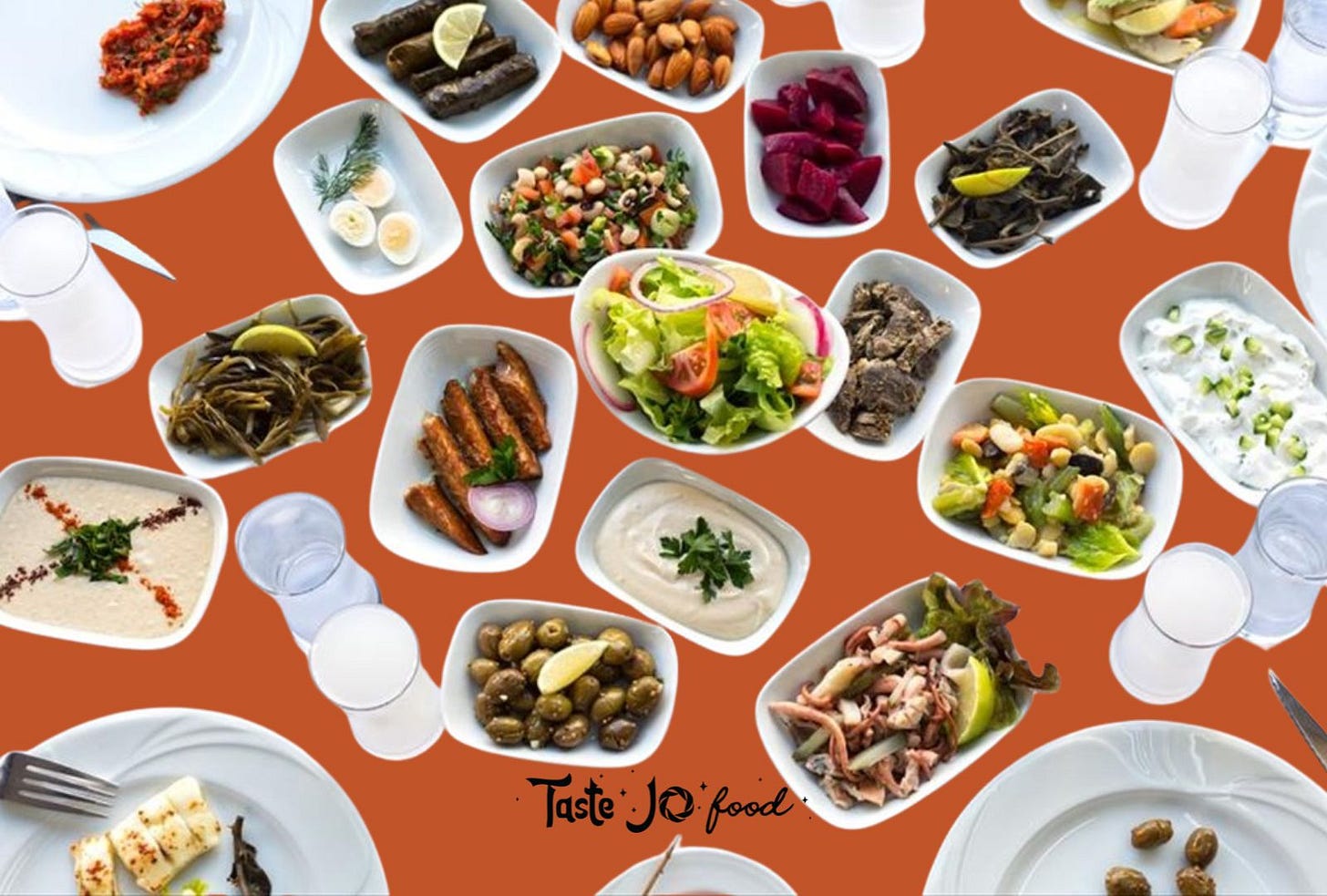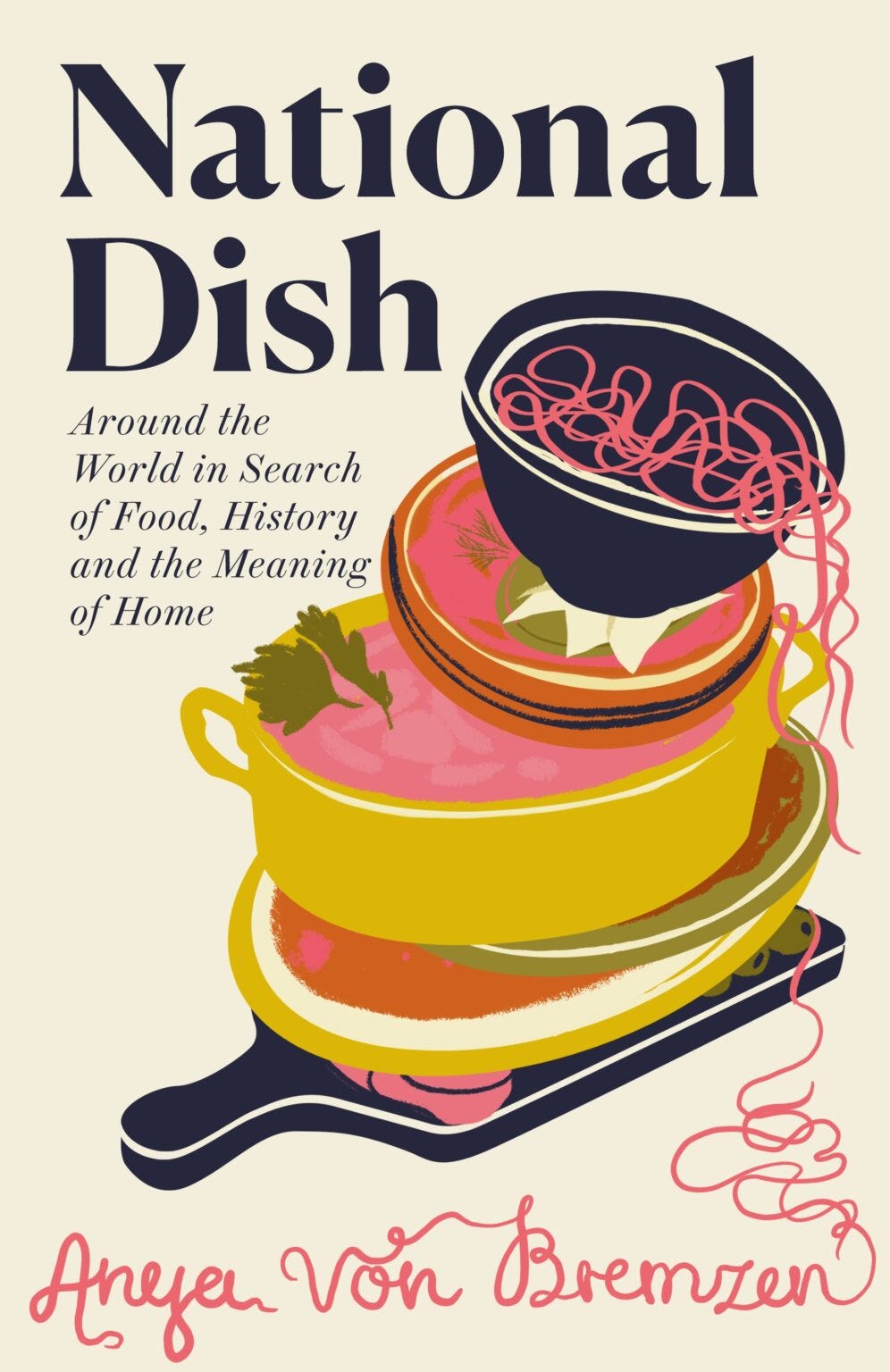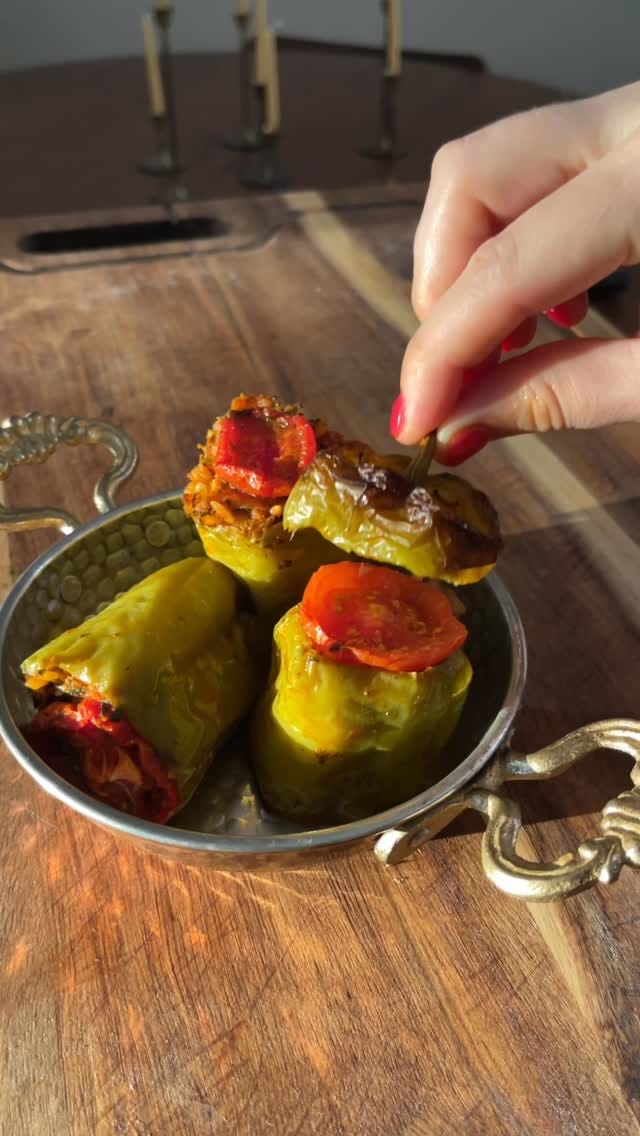A Note from the Author:
This week, I’m pulling from the archives. I was traveling for work and, somewhere along the way, picked up a case of COVID, ugh. Between sneezes and naps, I managed to revisit and refresh an older post from back when I had just a handful of subscribers. I hope you enjoy it just as much the second time around or for the first time, if you missed it!
Next Saturday, I’m off to Norway for a two-week Chef-in-Residence program. I’m really excited for the opportunity, though I’m not quite sure how intense the schedule will be just yet. With that in mind, my usual weekly posting rhythm might shift a bit. Still, I’ll do my best to share updates and drop notes in the Substack app as time allows. Thank you for understanding, and I look forward to sharing more about my experience!
In past newsletters, I’ve mentioned a book I was eager to read: National Dish by Anya von Bremzen. The central question she explores is a compelling one: What makes a national dish and who gets to decide? To answer it, she travels through six cities, each a lens into how cuisine becomes entangled with place, identity and politics.
Here’s a little teaser of the journey she takes:
Paris: Pot on the Fire (Pot-au-feu)
Naples: Pizza, Pasta, Pomodoro
Tokyo: Ramen and Rice
Seville: Tapas, Spain’s Moveable Feast
Oaxaca: Maize, Mole, Mezcal
İstanbul: The Ottoman Potluck
While I devoured the whole book, I was most captivated by the final chapter on İstanbul and what von Bremzen calls the Ottoman potluck. She uses the term “potluck” to evoke the shared, eclectic nature of İstanbul’s meze culture. But to be clear: this is no lineup of Midwestern mayonnaise-based casseroles and Crock-Pots. Still, I’m not entirely sold on the term. “Potluck” doesn’t quite capture the nuance and history embedded in meze.
That said, she’s right about one thing: meze is the perfect metaphor for İstanbul. It’s a fluid, ever-evolving table of tastes, shaped by trade, migration, empire and the city’s singular position at the crossroads of two continents.
Mezes are small, flavorful dishes traditionally served on a tray, known as a çilingir sofrası, at a meyhane, the Turkish tavern. They’re typically enjoyed alongside rakı, Turkey’s national drink. This anise-flavored spirit, distilled from grapes, is known by many names across the region: pastis in France, ouzo in Greece, sambuca in Italy, arak in the Levant and aguardiente in parts of Spain. The taste is bold, unmistakably licorice-forward and often accompanied by good conversation, nostalgic songs and long, lingering evenings with family and friends.
The meyhane is more than just a place to eat, it’s a cultural ritual rooted in connection and community. Meze culture is accessible to all, cutting across social classes and backgrounds.
And while the experience feels distinctly Turkish, it is far from being exclusively so. Each meze carries within it a layered history shaped by migration, empire and the contributions of minority communities. Albanians, Armenians, Greeks, Sephardic Jews, Russians and others have all left their mark on the meze table. In this way, meze offers a powerful reminder that national borders are often too rigid and simplistic to define the true identity of food. Nowhere is this more evident than in İstanbul, where every bite tells a story of shared heritage and intertwined histories.
Take a seat at a çilingir sofrası and you’ll find a mosaic of mezes, each with its own backstory all woven into the fabric of İstanbul’s culinary identity. Here’s just a small sampling of what might be on the table:
Topik (chickpea, potato and tahini balls) – Armenian
Grilled Eggplant and Chickpea Salad – Sephardic Jewish
Arnavut Ciğeri (fried liver and onions) – Albanian
Midye Dolması (stuffed mussels) – Kurdish
Taramasalata (salted and cured roe paste) – Greek
Each of these dishes tells a story, not only of ingredients and preparation, but of movement, memory and belonging.
As Anya von Bremzen puts it so precisely in National Dish:
“But who owns a recipe, really? I thought once again about the ‘problematic obviousness’ of national food cultures… Modern Turkey belonged to a vast geographical region where people cooked similar foods centuries before nation-states came into being. The collapse of the Austro-Hungarian and Ottoman empires and more recently, the USSR, created over four dozen new nations; some had nothing remotely resembling a previous national consciousness, let alone a distinct cuisine. So whose hummus was it? Whose baklava or dolma? Whose demitasse of dark sugary coffee: Türk, Bosanska (Bosnian), Kypriakos (Cypriot), or Elliniko (Greek)? The current storms in a coffee cup over ownership of keşkek or lavash—weren’t they serving as fledgling proxies for deeper, much stormier geopolitical conflicts?”
These questions linger in every bite. They remind us that food, while deeply personal and cultural, is also shared, contested and constantly evolving. To eat meze in İstanbul is not only to taste Turkey but to taste histories that refuse to be confined by borders.


Want more recipes? I have been partnering with a beautiful Turkish Olive Oil Company called Heraclea, to develop recipes, recipe reels and articles for the brand. If you want to see more recipe content, head over to their Instagram because there will be a few more recipes published over the next few weeks. Full transparency: this is a paid collaboration. But as always, I only work with products I genuinely enjoy using and can wholeheartedly stand behind. See a couple of recipe videos included below.









I wish you the best in Norway, when we were there salads were practically unheard of and fresh greens hard to get ( maybe they were available in Oslo but I was elsewhere) , so I’m very curious about what kind of food you will find there and look forward to your posts…
But I’m very disappointed in Anya.. I’ve enjoyed several of her articles about food in Turkey in the past but why in the world would she say midye dolma are Kurdish? Have you ever looked at a map of Kurdistan? Kurds live thousands of kilometers from any seas and probably never tasted mussels until they were displaced from their homeland in the 1990s and started moving to Istanbul and other western cities en masse. I did a quick online search in Turkish about the origin of this dish, which dates back to 1585 , Ottoman times, when chefs brought from Rhodes and Crete popularized it. Today there may be Kurdish street vendors selling it from carts in Istanbul, that doesn’t make it a Kurdish dish.
And the term potluck is misleading and does not do justice to the rich meze culture.
By the way, the best food I’ve ever had was in Armenia, and I’m going back in September. I highly recommend you find a way to go there too.. I’ll be happy to send you recommendations…
But keep up the good work!